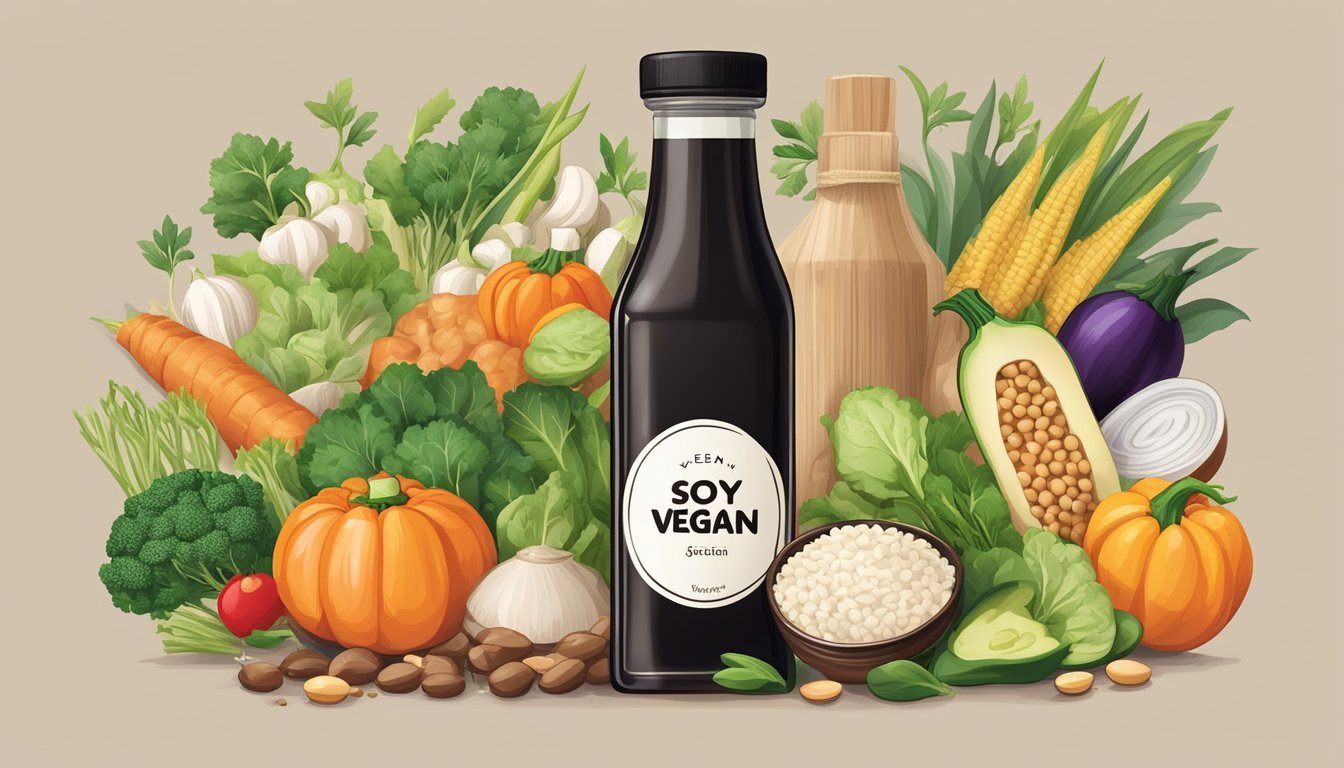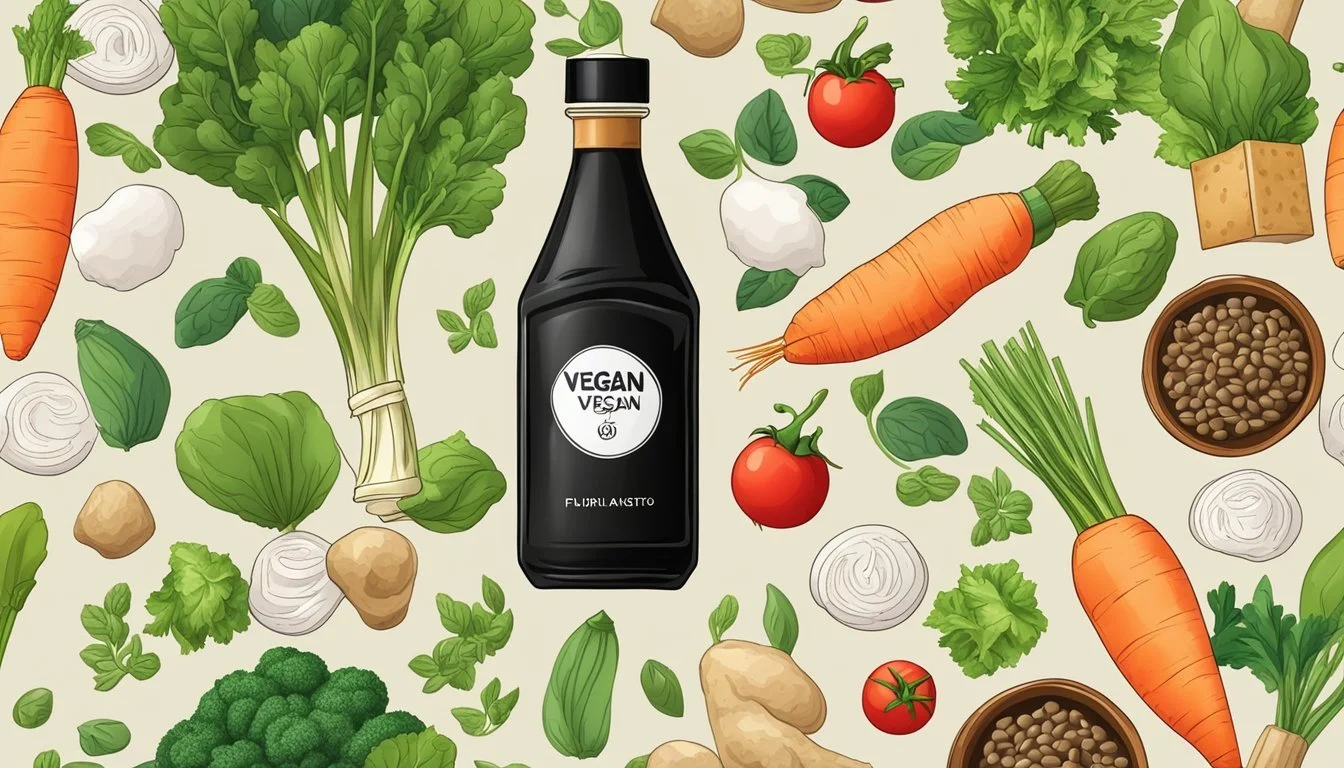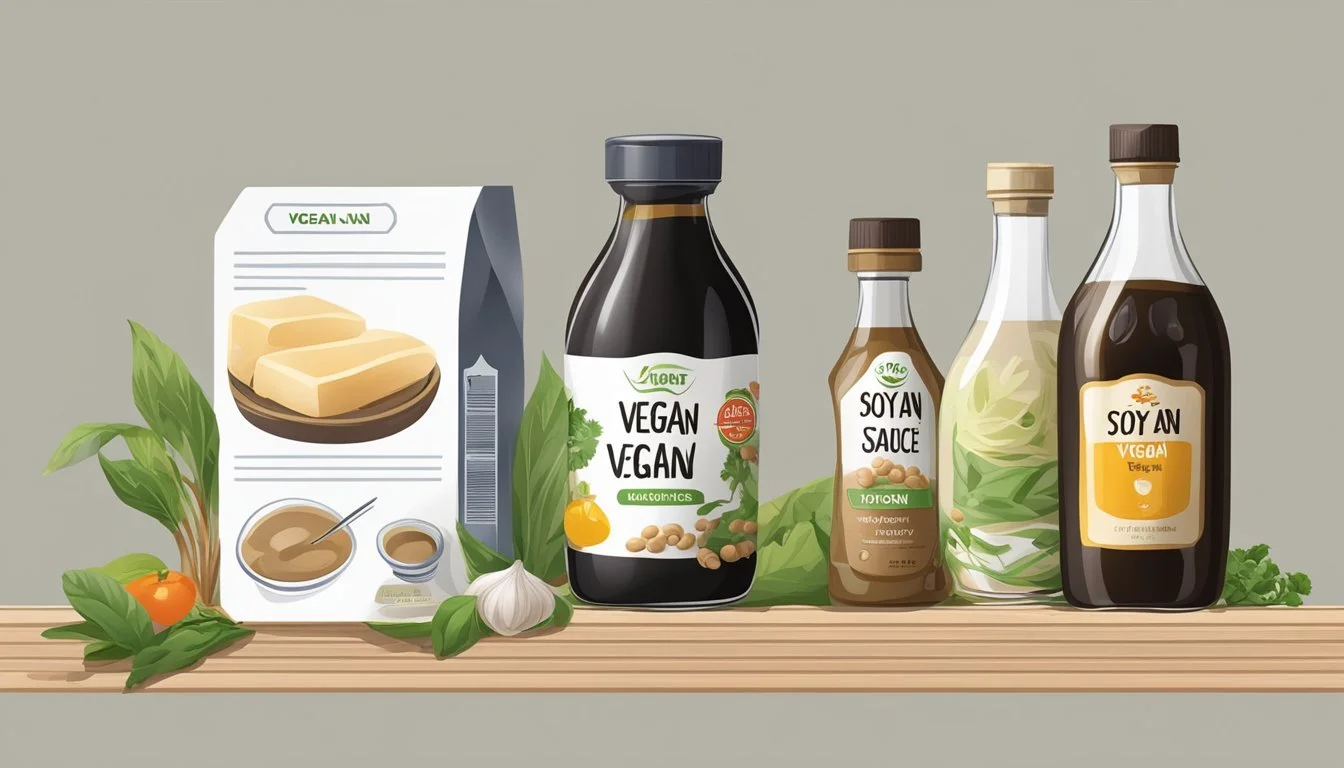Is Soy Sauce Vegan?
Unveiling the Truth About This Condiment
Soy sauce is a staple condiment that originated from China and has permeated cuisines around the globe. It is traditionally made from a combination of fermented soybeans, wheat, salt, and water. The fermentation process is key, not only for flavor development but also for breaking down the proteins from the soybeans and wheat into their constituent amino acids. This process creates the sauce's signature umami taste.
Most soy sauces on the market are vegan-friendly since they contain only plant-based ingredients. However, vegans should be aware that there are some brands which add animal-derived additives or flavor enhancers. Thus, it is advisable for those following a strict vegan diet to read labels carefully. Moreover, for individuals who are concerned about the use of processed foods, it's worth noting that while soy sauce is a processed product, it is generally considered beneficial in moderation because it is fermented—a process that can increase the bioavailability of certain nutrients.
Overview of Soy Sauce
Soy sauce is a traditional Asian condiment with deep roots in the culinary history of East and Southeast Asia. It imparts a distinct umami flavor that has become integral to various cuisines within the region.
History of Soy Sauce
Soy sauce originated in ancient China, dating back to the Western Han Dynasty (206 BCE - 220 CE). It evolved from a salt-fermented concoction using meats and vegetables to one focusing on pure grain fermentation. Over centuries, the process of making soy sauce was refined, eventually creating the complex and rich condiment now known worldwide. As trade and cultural exchange flourished, soy sauce permeated throughout East Asia, with regions like Japan developing their own variations.
Cultural Significance
In Japan and China, soy sauce is more than just a condiment; it represents a culinary heritage that has been preserved and adapted over millennia. Each region's unique style of soy sauce embodies a different aspect of their food culture. In East Asia, soy sauce is essential in several cooking techniques, such as marinating, dipping, and seasoning. It plays a crucial role in highlighting the natural flavors of ingredients, offering a balance of saltiness and the savory taste known as umami. Soy sauce's influence has long exceeded its primary geographical origins to become a staple in kitchens across the globe.
Composition of Soy Sauce
Soy sauce, an integral condiment in various cuisines, owes its unique flavor to a blend of natural ingredients and a traditional brewing process. The composition of soy sauce is a testament to the harmony achieved when simple ingredients are transformed through fermentation.
Basic Ingredients
The primary ingredients of soy sauce are:
Fermented soybeans: The protein-rich base of soy sauce.
Wheat: Contributes to the sauce's flavor and texture.
Salt: Acts as a preservative and flavor enhancer.
Water: Enables the fermentation process.
This mixture undergoes fermentation, traditionally assisted by a mold called koji, which cultivates beneficial microbes producing a distinct umami flavor. Variations in these ingredients' proportions can influence flavor, color, and consistency of the final product.
Varieties and Flavors
Thinner consistency
Lighter color
Salty, umami-rich flavor, perfect for seasonings and dips
Dark soy sauce:
Thicker
Darker due to longer aging and sometimes the addition of caramel or molasses
More pronounced, sweet flavor, suited for adding color and rich taste to dishes
Traditionally made without wheat, thus typically gluten-free
Richer in flavor and protein
Contains less sodium compared to some other varieties
Besides these common types, soy sauce can include additives for distinct flavors and preservative qualities. For example, lactic acid, sugar, and even specific flavorful herbs may be added. Despite this range of flavors, the basic composition of fermented soybeans, salt, wheat, and water remains consistent across most soy sauce products.
Vegan Considerations
When assessing whether soy sauce is compatible with a vegan lifestyle, it's critical to examine both the ingredients and the production process to ensure they align with vegan principles, which exclude all forms of animal exploitation and cruelty.
Animal-Derived Ingredients
Soy sauce is traditionally made from soybeans, wheat, salt, and water—all of which are plant-based and suitable for those following a vegan or plant-based diet. However, vegans should be vigilant regarding certain brands that may incorporate animal-derived ingredients. It's important to always check the label for any non-vegan additives.
Additives: Occasionally, additives are used to enhance flavor or preserve the sauce. Vegans should be aware of additives like flavor enhancers that could be derived from animals.
Organic and Gluten-Free: Some consumers prefer organic soy sauce, which ensures no synthetic fertilizers or pesticides are used. A gluten-free option is also available for those with dietary restrictions.
Production Process
The manufacturing of soy sauce involves a fermentation process. This process typically doesn't include animal products, but there are two critical aspects to consider:
Hydrolyzed Soy Protein: Some brands use hydrolyzed vegetable protein. This involves a process known as hydrolysis, which is generally free from animal products. Nonetheless, verification from the brand would be necessary for those strictly adhering to a vegan lifestyle.
Animal Testing: While most wouldn't associate animal testing with soy sauce production, thorough research or inquiry to the manufacturer can provide reassurance that no such practices are involved.
By considering these facets of soy sauce production and content, vegans can make informed decisions that align with their ethical and dietary preferences.
Nutritional Profile
Soy sauce is a condiment with a distinct umami flavor, widely used across various cuisines. It is typically made from fermented soybeans, wheat, salt, and water. Its nutritional profile includes a combination of proteins, while some specialty varieties are available in gluten-free forms.
Health Benefits
Soy sauce contains a modest amount of protein, contributing to its nutritional value. The fermentation process involved in making soy sauce also reduces its glycemic index, making it a favorable option for adding flavor without significantly affecting blood sugar levels. Additionally, soy sauce imparts the savory taste of umami, an essential flavor profile that can enrich and deepen the taste of various dishes.
Dietary Concerns
However, consumers need to be cautious about the high sodium content in traditional soy sauce, which can be a concern for those monitoring their salt intake. One tablespoon can contain up to 960mg of sodium, which is about 42% of the recommended daily intake. There are light soy sauce varieties that are saltier and thinner, as well as dark soy sauces which are less salty but thicker and richer, potentially affecting the sodium content. Those requiring gluten-free diets should opt for gluten-free labeled soy sauce, as the conventional version contains wheat.
To accommodate dietary preferences and health concerns, there are reduced sodium and gluten-free soy sauce options available on the market.
Soy Sauce in Cooking
Soy sauce is a versatile condiment that enhances the flavor profile of various dishes. It's widely used in cooking to introduce a balance of saltiness and a touch of umami.
Culinary Uses
Soy sauce serves as a fundamental ingredient in an array of recipes across multiple cuisines. It's commonly used as:
A base for marinades, infusing a savory taste into proteins and vegetables.
A dip for sushi and dumplings, either on its own or mixed with other ingredients like wasabi or ginger.
An essential component in stir-fry dishes, contributing depth and enhancing the overall flavor.
A seasoning for fried rice or noodles, adding a rich color and salty dimension without overwhelming the dish’s taste.
Its application extends to dressings for salads and can serve as a secret touch in enhancing the sweetness of some sauces and glazes, providing a subtle yet complex flavor profile.
Recipe Considerations
When incorporating soy sauce into recipes, one should consider:
The variety: Light soy sauce offers a more delicate taste suitable for dipping and dressings; dark soy sauce is sweeter and thicker, ideal for marinades and glazes.
The intensity: A little goes a long way due to its strong flavor—start with a small amount and adjust to taste.
The dish's components: Soy sauce pairs well with mild ingredients that readily absorb its flavor, such as tofu or steamed rice.
Dietary restrictions: While typically vegan, some brands may include additives like wheat, so one should examine labels carefully, especially if catering to specific dietary needs.
Through careful consideration of these factors, one can expertly utilize soy sauce to elevate the taste of countless dishes.
Soy Sauce Alternatives
When considering soy sauce alternatives, one must take into account dietary restrictions and personal health goals. Suitable replacements cater to gluten-free and low-sodium diets, as well as preferences for non-soy ingredients.
Gluten-Free and Low-Sodium Options
Tamari: This is a Japanese soy sauce that is typically made without wheat, offering a gluten-free alternative to conventional soy sauce. It comes in both regular and low-sodium varieties, making it an adaptable choice for those on restricted sodium diets.
Light Soy Sauce: An option for those seeking a soy sauce with less sodium, light soy sauce is thinner and often less salty than its dark counterpart but is not always gluten-free.
Dark Soy Sauce: Richer and thicker, dark soy sauce adds a deep color to dishes. It is higher in sodium and is not gluten-free. One can find low-sodium versions and gluten-free alternatives in some brands.
Coconut Aminos: A popular non-soy, gluten-free substitute, coconut aminos are made from the fermented sap of coconut palm and sea salt, boasting a much lower sodium content compared to traditional soy sauces.
Non-Soy Alternatives
When allergies or dietary choices exclude soy products, individuals still have viable alternatives:
Vegetables: By using vegetable broths infused with flavors like garlic, ginger, and green onions, cooks can replicate umami tastes reminiscent of soy sauce.
Soy-Free Sauces: Premade sauces that contain no soy protein may use ingredients such as mushrooms or herbs to create complex, umami flavor profiles without the use of actual soy.
Consumer Guide
When purchasing soy sauce, it is important for consumers to understand label information and to select the right type of soy sauce for their dietary preferences and culinary needs.
How to Read Labels
Consumers should look for key indicators on soy sauce labels to ensure the product meets their dietary requirements. Ingredients should list soybeans, wheat, salt, and possibly water, with no animal-derived components. Brands like Kikkoman and San-J often offer detailed labeling. Consumers looking for gluten-free options should specifically look for labels that mention this, as traditional soy sauce contains wheat. Varieties labeled as organic are available for those preferring products made without synthetic pesticides or fertilizers. It's also important to check for additives or preservatives which might not align with strict vegan standards.
One should note if the packaging specifies the soy sauce as usukuchi (lighter in color and saltier) or if it's a darker, richer type. Bottled soy sauce should have clear expiration dates and storage instructions to ensure product integrity.
Selecting the Right Soy Sauce
There are several types of soy sauce to choose from, each with their own unique flavor profiles and uses:
Regular (Dark) Soy Sauce: A staple in many dishes, this variety has a full-bodied flavor and is suitable for a variety of recipes.
Light Soy Sauce (Usukuchi): With a saltier taste and lighter color, this sauce is often used in dishes where preserving the color of the ingredients is important.
Tamari: Often made without wheat, tamari is a good gluten-free option with a rich, smooth taste.
When shopping for soy sauce, consider the variety that best suits the planned culinary use. For vegans, the brand matters - some, like San-J, produce specifically certified vegan and gluten-free soy sauces. Always check the packaging to see if the product aligns with vegan principles and other dietary restrictions you may have. If the goal is to use soy sauce as part of a health-conscious diet, opt for variations that have reduced sodium levels or are made with organic ingredients.





